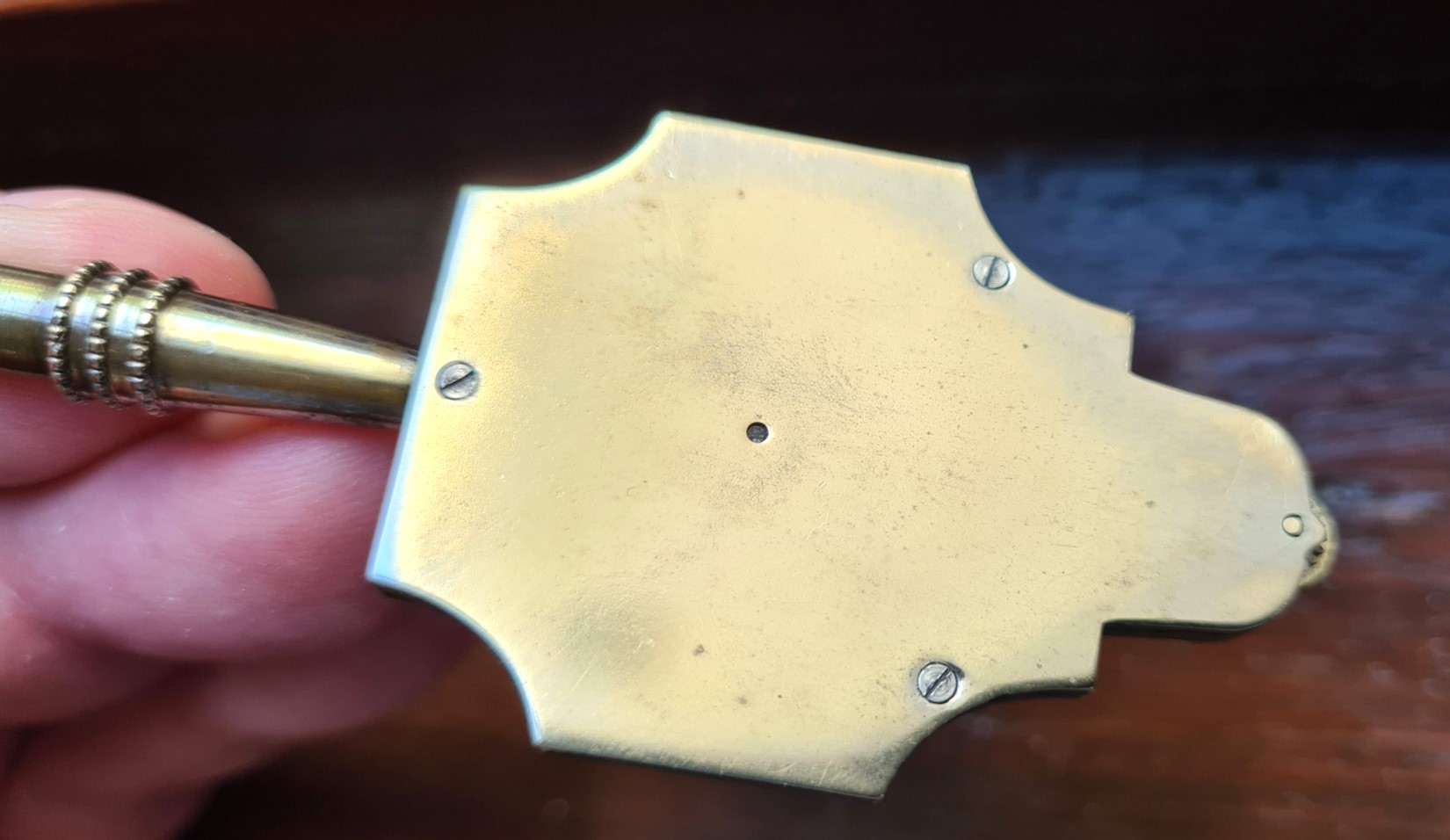This month’s measure is an uncommon survivor from one of the most important watchmakers in the Jura district in Switzerland.
Swiss watchmaker Wuilleumier Frères began operations in Renan, located between La Chaux-de-Fonds and Saint Imier, in 1858. They specialised in early automatic watches, pedometers and other measuring instruments such as curvimètres/map measures. The manufacturer was renamed Pedos SA in 1929, moved to La Chaux-de-Fonds and became Derby SA in 1939. This company was the foundation of Ebauche Electroniques SA of Marin (EEM), an electronic and quartz watch specialist of the 1970s.

Wuilleumier Frères [Renan] produced, or at least sold, map measures prior to the manufacture of this months measure. They lodged a design application for two curvimètre models, patent number 7481, with the Swiss Federal Office of Intellectual Property on 20 October 1898 and it is this application that shows close design association with the measure shown here. It is possible that the brothers mentioned on the design application were Jules-Edmond and Charles Armand Wuilleumier. There were three claimed unique features about the designs registered. Case and handle were to be in one piece. The measuring scales were indicated at the top of each dial, between the distance measured, on each concentric scale circle. Finally, a version with an incorporated compass was suggested. None of these are particularly earth moving innovations and the final one had already been seen on measures from other manufacturers. This design application differs slightly from this month’s measure. The handle of the actual measure is now a shaped separate part, screwing on to the case. The measure is closest in design to that shown in Figure 1. While the case shape is slightly different, the design lineage is all too apparent.
It is unlikely that many navigators would wish to use this analogue measure in a modern context. Particularly as none of the four scales on the Wuilleumier Frères curvimètre are of much use with more recent Ordnance Survey maps of 1:25 000 or 1:50 000 scales. Though a measured distance could be tracked back across the scale shown at the bottom of a modern paper map. The 1:40 000 scale on the instrument could be used with many modern Harvey maps that utilise that scale.
Note that the scales shown on each version of the curvimètre in the design application differ. Figure 1 on the design application shows scales of 1:25 000, 1:50 000, 1:75 000, 1: 100 000. Figure 3, with compass, has scales 1:20 000, 1:40 000, 1:80 000, 1:100 000. This month’s measure has the four scales shown in Figure 3.
The case is 47mm long, 34mm wide and 4mm thick with a raised dial. Below the dial, at the bottom of the case, is the maker’s mark. The company had registered this hallmark: “FWR” in a divided circle with bird wings [eagle?] above, on 4 February 1885. This points at a date range for this months measure of c1885-1929, though an advertisement (shown below) suggests that case shape had changed a decade previous, so this measure may have had a brief production.
The crystal is slightly domed, covering a paper dial with four measuring scales. The crystal is pinned to the case with three small steel screws: two at the top, at the ‘ten’ and ‘two’ positions, one at the ‘six’ position. Tracking the finely toothed wheel at the base of the measure along a line on a map, rotates fine internal gearing, rotating the blued needle around the dial. The rear of the case is plain with no markings. There are three small steel screws holding front and rear of case together. The 65mm long steel handle has three bead rings to aid grip and a circular finial that normally indicates Swiss/French manufacture. The curvimètre weighs 44g.
Despite having come from one of the most iconic of Swiss watchmakers, this is an unusual map measure and rarely seen. This may point at small volume production, a brief production date range or poor survival rates due to mechanical failure. This particular measure still operates faultlessly and is accurate within the confines of such an analogue instrument. The scales however, are of less use in a modern context.
Three Points of the Compass has looked at a few more Map Measurers in detail. Links to these can be found here.











